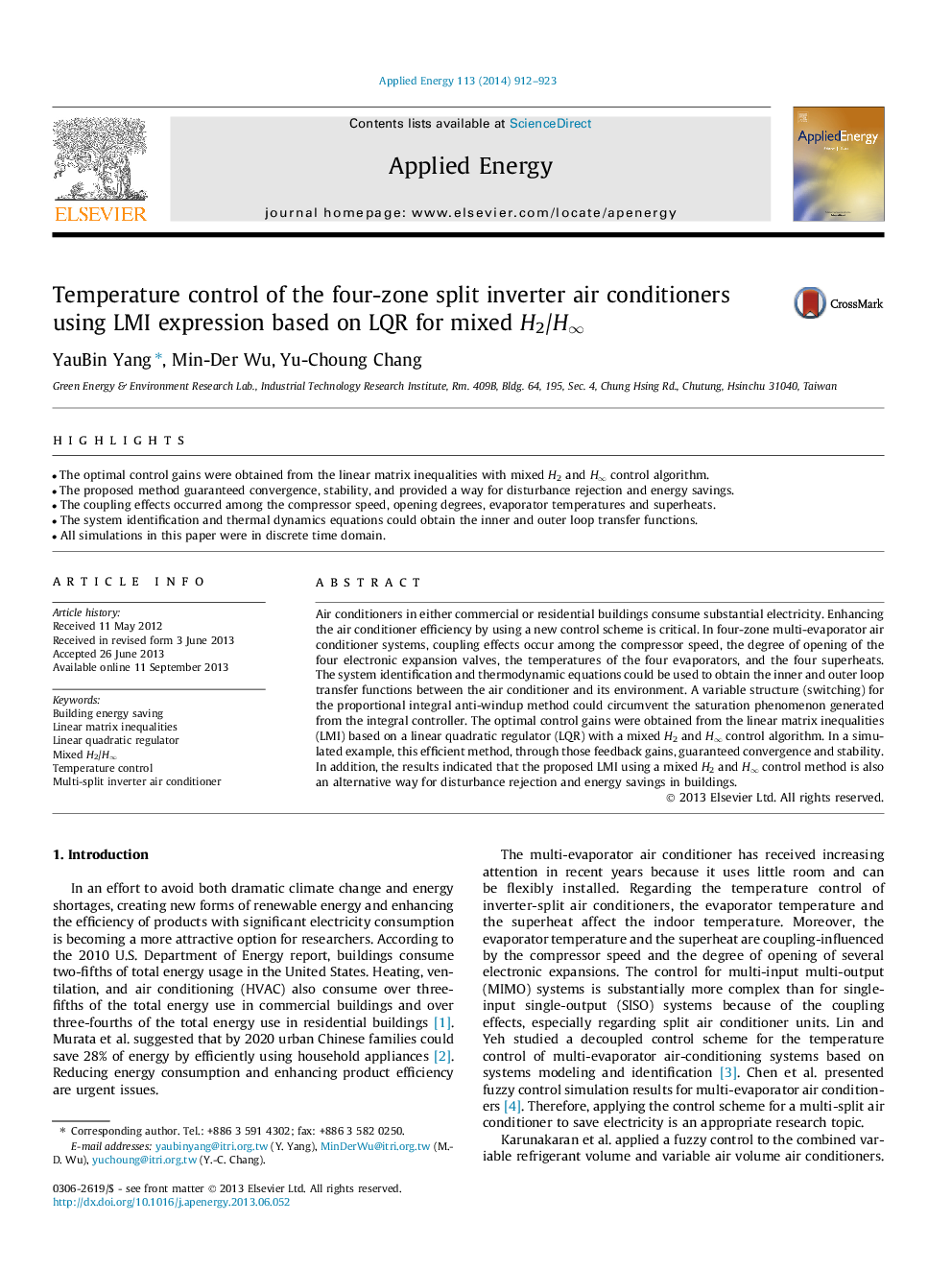| Article ID | Journal | Published Year | Pages | File Type |
|---|---|---|---|---|
| 6692080 | Applied Energy | 2014 | 12 Pages |
Abstract
Air conditioners in either commercial or residential buildings consume substantial electricity. Enhancing the air conditioner efficiency by using a new control scheme is critical. In four-zone multi-evaporator air conditioner systems, coupling effects occur among the compressor speed, the degree of opening of the four electronic expansion valves, the temperatures of the four evaporators, and the four superheats. The system identification and thermodynamic equations could be used to obtain the inner and outer loop transfer functions between the air conditioner and its environment. A variable structure (switching) for the proportional integral anti-windup method could circumvent the saturation phenomenon generated from the integral controller. The optimal control gains were obtained from the linear matrix inequalities (LMI) based on a linear quadratic regulator (LQR) with a mixed H2 and Hâ control algorithm. In a simulated example, this efficient method, through those feedback gains, guaranteed convergence and stability. In addition, the results indicated that the proposed LMI using a mixed H2 and Hâ control method is also an alternative way for disturbance rejection and energy savings in buildings.
Keywords
Related Topics
Physical Sciences and Engineering
Energy
Energy Engineering and Power Technology
Authors
YauBin Yang, Min-Der Wu, Yu-Choung Chang,
